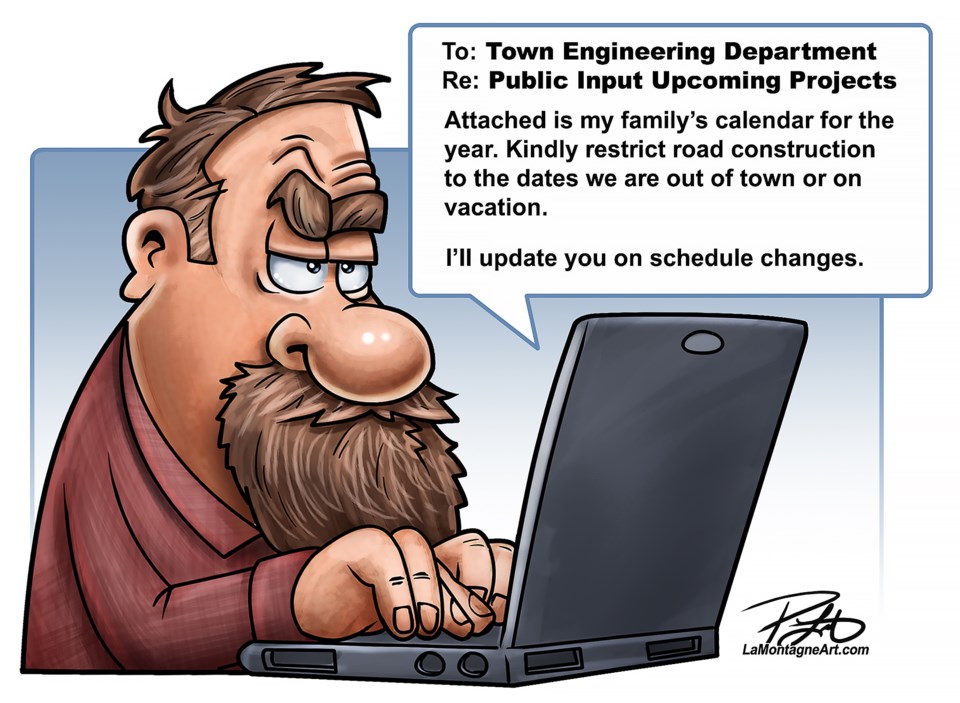Change can be both hard and difficult.
It’s easy to become adjusted to a specific normal, but change is inevitable and as the Greek philosopher Heraclitus wrote, it’s the only constant in life.
In upcoming years, both the towns of Banff and Canmore will see changes in infrastructure that would confuse a local if they transported from the 1950s to the present.
While it’s all too common to glorify and glamorize the past, the reality is society is consistently evolving and changing.
The coal soot covered roads of Canmore are long gone and never returning and the over-congestion of Banff and the national park will hopefully see fewer vehicles arriving as the shift towards busing is being prioritized.
In Canmore, the infamous intersection – or Borrowman’s corner as it came to be referred – drew the ire of residents and not without reason. Anything that could go wrong went wrong.
From construction delays, issues with light placement and supply chain setbacks that had the signal controller – the key aspect in learning traffic patterns and moving all modes smoothly – it arrived well past the expected delivery date.
Though a first in Canada, it’s a common sight in western and central Europe as the project prioritizes safety and active modes of transit. It didn’t so much take priority away from cars, but acknowledged there are other modes to get from point A to B. And ultimately the best way to incentivize is to give the safest method to travel with separated lanes.
Statistics have shown early success, but as the next phase is likely to begin in 2024 on Railway Avenue, it’s key to take the lessons from the first build and apply them to the next.
Banff went through its painful process of redesigning and reconstructing Bear Street which has likely led to PTSD for some in its Town hall. And as every public sector employee is a glutton for punishment, they are about to embark on consultation and design on potentially making Banff’s pedestrian zone permanent.
Those changes aren’t just meant to help today, but are made with the next generation in mind. In both communities, it’s easy to see the success active modes of transit have had on younger people in how they get to destinations.
Both Banff and Canmore have invested heavily in Roam transit, with it entirely free in Canmore and free for Banff residents only in the tourist-based community as they hit record numbers of ridership in 2022, with many transit services still recovering from the COVID-19 pandemic. The regional route will see frequency increase with more buses on the way and the On-It Regional Transit proved to be vitally important last summer.
Parks Canada has also shifted the priority away from personal vehicles to busing – such as in Moraine Lake – in efforts to protect visitor experience, environment and wildlife in the national park.
The simple truth is, not only is there not room to build out more roads and parking lots, but even if it was, it’s just not practical.
At the Alberta planning conference in Canmore last November, Darren Enns the Town of Banff’s director of planning and development and champion of intercept parking, said it’s important to keep reinventing aspects of a community and prioritize modernity and safety in a reference to Bear Street redevelopment.
It’s easy to be afraid of change and hostile to any efforts to bring it about, but it takes more work to understand why it’s taking place and the potential benefits. It doesn’t mean people have to like it, but the world is consistently evolving whether people agree with it or not.
It’s important for residents to voice opinions and constructive criticism when public engagement takes place as well as for the public sector to find the trends from those messages and further evolve projects to public needs.
A community of people will never agree on any one thing, but it’s entirely within a person’s capability to adapt to change.




